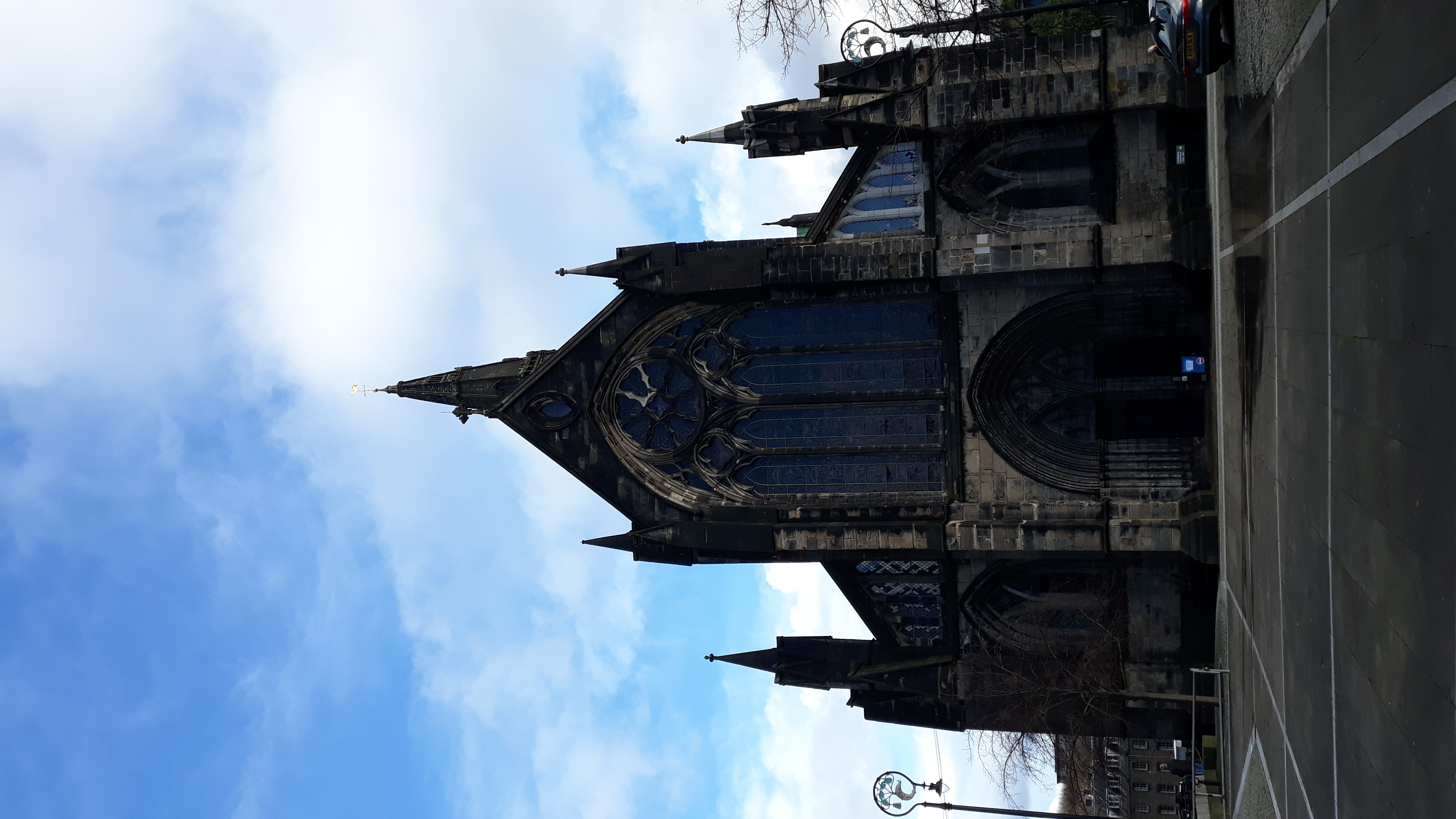

One of the most interesting historical landmarks of the Scottish city of Glasgow has to be the Necropolis, a Victorian cemetery with a fascinating history.
It is located to the east of another very important historical location, namely Glasgow Cathedral, one of the oldest building in Glasgow founded in the late 12th century and dedicated to Saint Mungo. Within a half a mile radius one can also find Glasgow’s Royal infirmary and thus symbolically very close by you have historical landmarks linked with the stages of a person’s existence, namely birth (infirmary), life (Church) and death (the cemetery/ Necropolis).

Reaching the Necropolis is very easy once you’re at the Cathedral. A road initially going downwards will take one to the Bridge of Sighs, built in 1833 by James Hamilton which saw thousands of funeral processions throughout its history. More on the history of the bridge is available here.
Scotland has numerous multi-centennial cemeteries with a plethora of individual histories of Scots, more or less known. Edinburgh has the Old Calton Cemetery, New Calton Burial Ground, Greyfriars Kirkyard, Warriston Cemetery, and many others. Aberdeen has the Saint Nicholas Churchyard. Yet Glasgow’s Necropolis stands out as the name implies a city of the dead, towering over what used to be called the second city of the Empire. The name in itself carries a heavy symbolism.
Once one crosses the Bridge of Sighs there is a pavilion made primarily from red sandstone (building material often used in Glasgow in the past). A semi-circular plaque reads the following message:
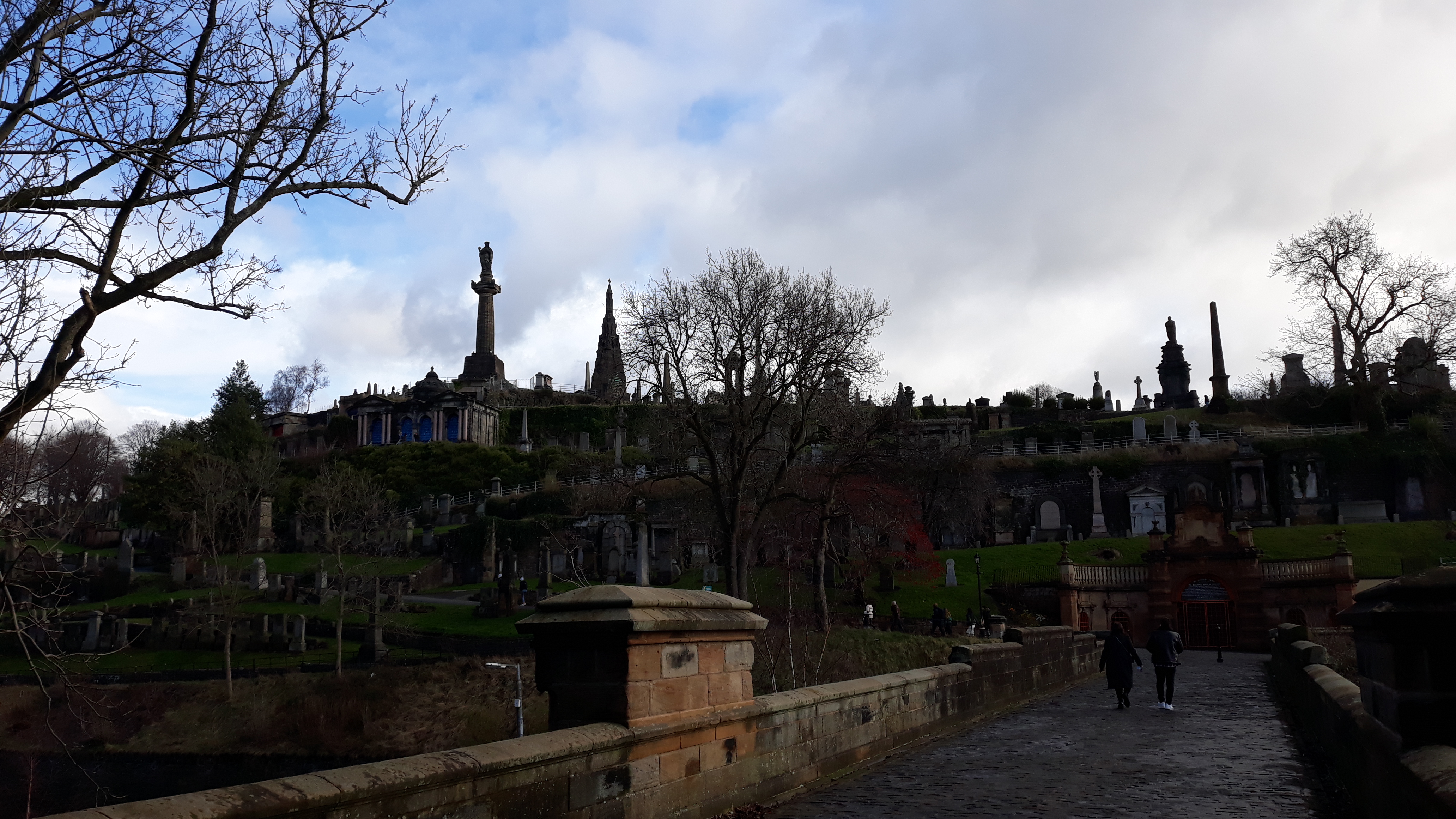
“The adjoining Bridge was erected by the Merchants House of Glasgow to afford a proper entrance to their new cemetery combining convenient access to the grounds with suitable decoration to the venerable cathedral & surrounding scenery to Unite the Tombs of many generations who have gone before with the resting places destined for generations yet unborn, where the ashes of all shall repose until the resurrection of the just when that which is born a natural body shall be raised in a spiritual body when this corruptible must put on incorruption when this mortal must put on immortality when death is swallowed up in Victory.”
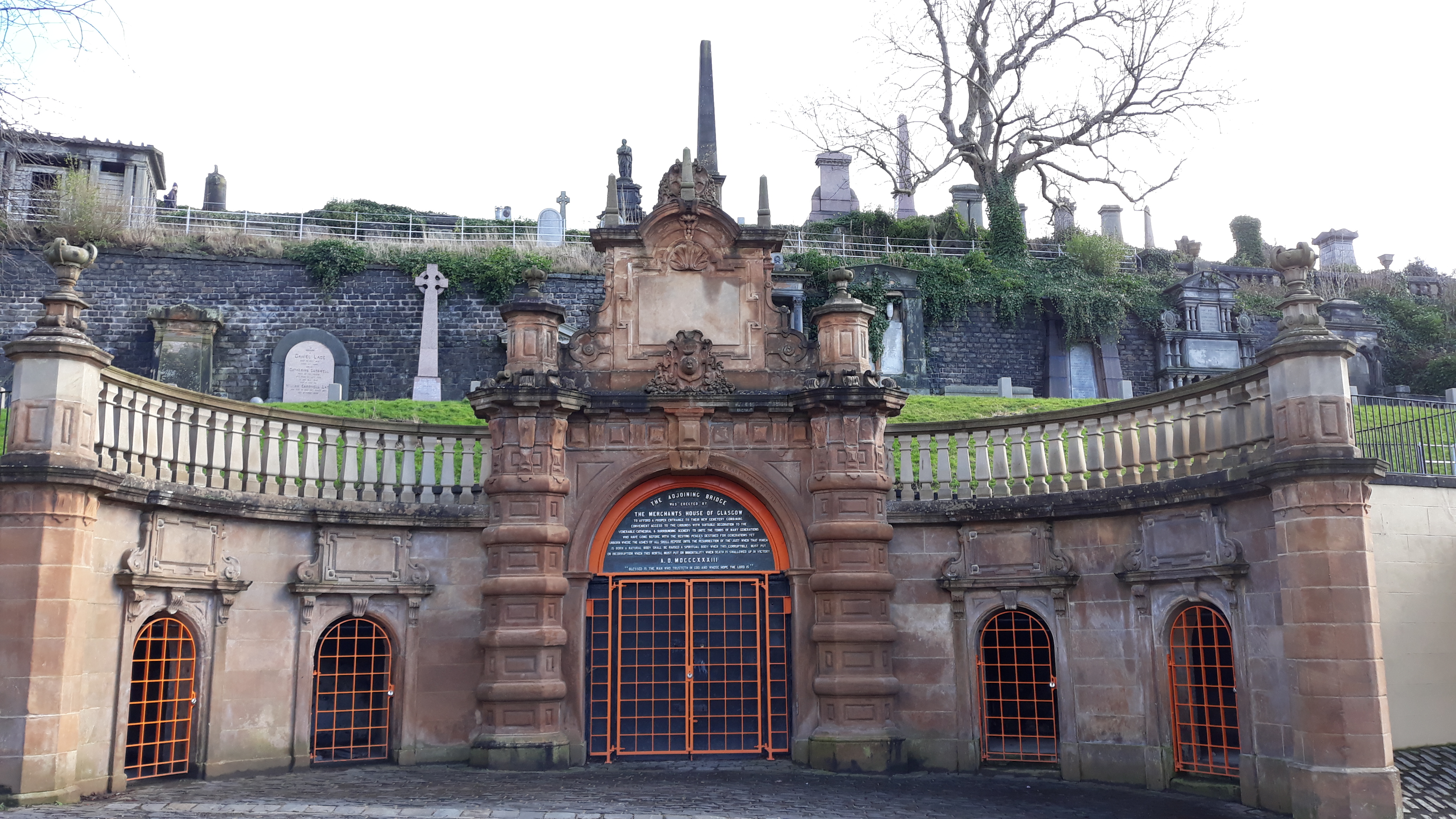
The Necropolis itself is a remarkable mix of fascinating architectures (mainly Classical Revival architectural fashion, sculptures with approximately 3500 tombs being built along the centuries. It is estimated that around 50,000 burials took place. Some famous individuals include several Lords Provosts (Peter Clouston 1800-1888; Sir William Collins 1817-1895; Henry Monteith 1764-1848 among others), engineers & shipbuilders (John Elder, John Inglis, Alexander Stephen), historians such as William Burns (1809-1876).
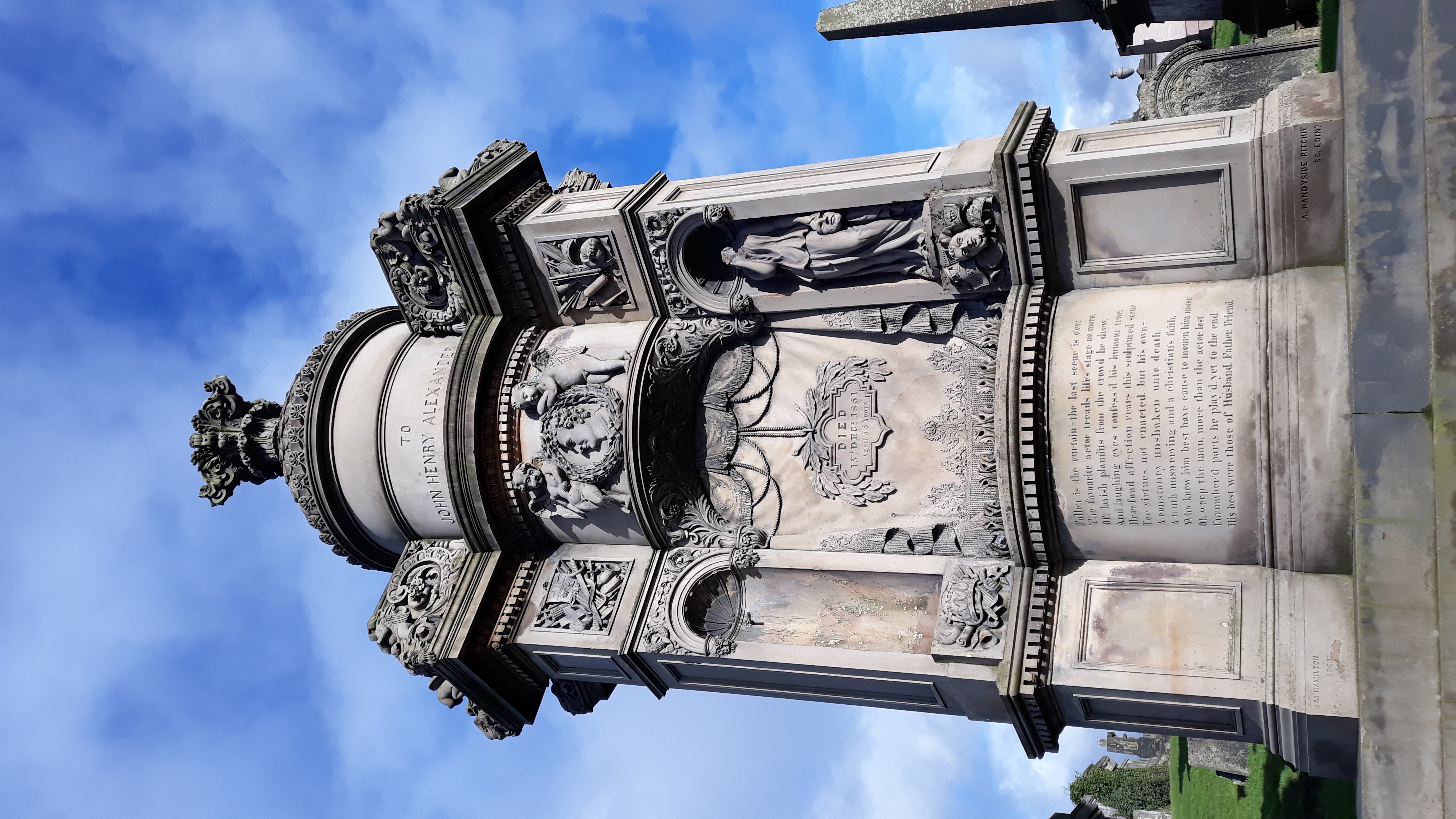
One of the largest monuments one can see from afar is the towering statue of Scottish reformer John Knox, a monument which was built in 1825.
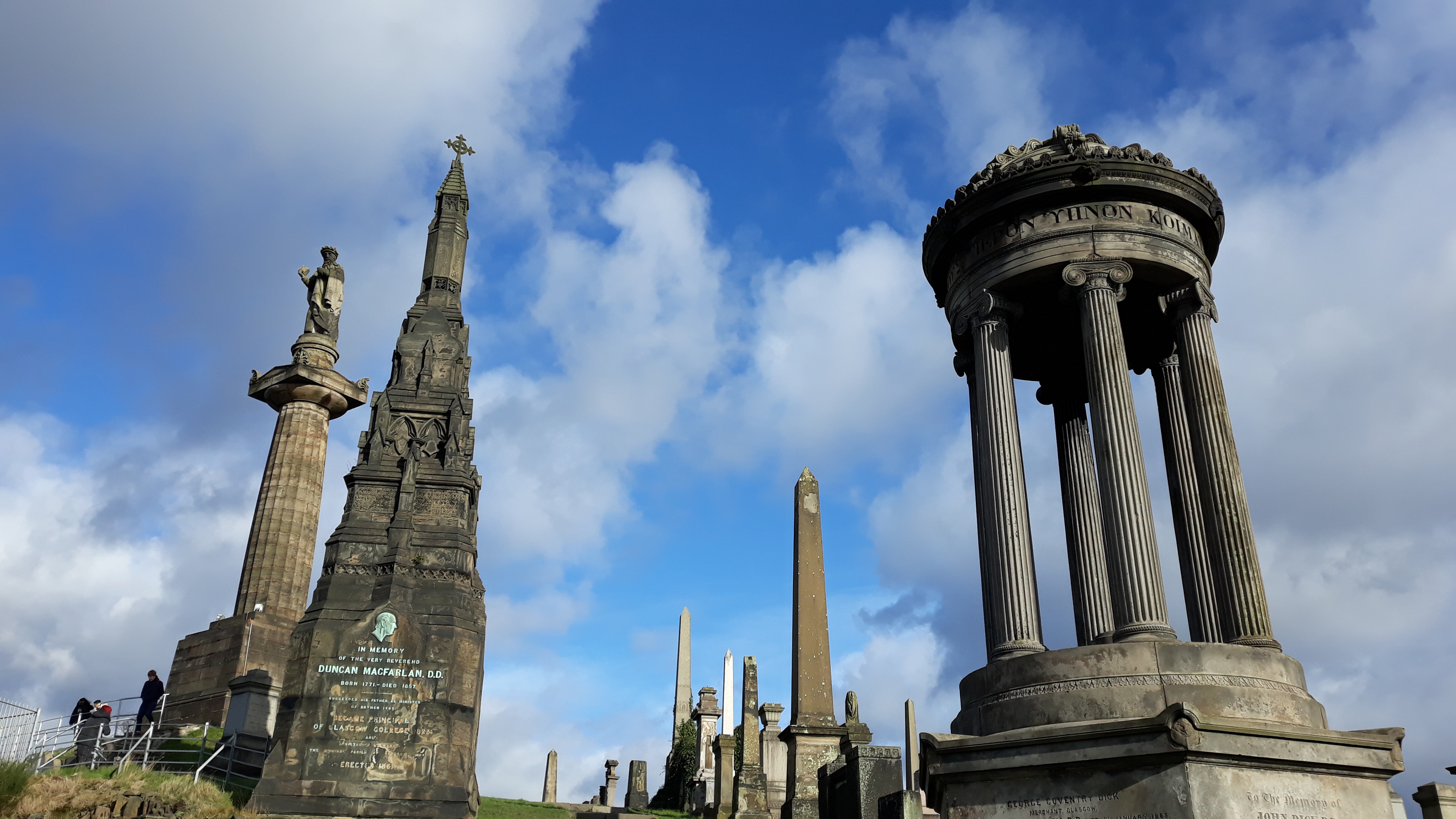
The Necropolis has a small section with War Graves: 19 Commonwealth service personnel, 15 from World War I and 4 from World War II.
Another interesting part of the Necropolis is the Jewish section, initially a separate part of the Necropolis as in the first half of the 19th century, Jewish individuals were unable to be interred within Christian burial grounds.
All in all, the Glasgow Necropolis has to be one of Glasgow’s most interesting historical landmarks. It represents an important part of Glaswegian and Scottish history. Its location is accessible and professional guided walking tours of this 37-acre cemetery are available. Whenever I am in Glasgow and if the weather allows it I always try to make it and revisit the Necropolis time and time again.
For more information on that, prospective visitors can access this Visit Scotland section and the Friends of Glasgow Necropolis webpage.
Other details:
Address: Castle St, Glasgow G4 0UZ, 3 min walk from Glasgow Cathedral
General admission is for free, Opening Hours (7:30-16:30)
* * *

Vlad Zamfira (Masters of Arts in Archaeology & History and Certificate of Postgraduate research in History at the University of Aberdeen, Scotland) is a historian and podcaster interested mainly in the History of the 16th century Mediterranean with particular focus to Venetian, Ottoman and Spanish relations during the period between 1559-1581 and the Fourth Ottoman-Venetian War of Cyprus. Also with a keen interest in the history of the Eighty & Thirty Years' Wars; Scottish and European History as whole.